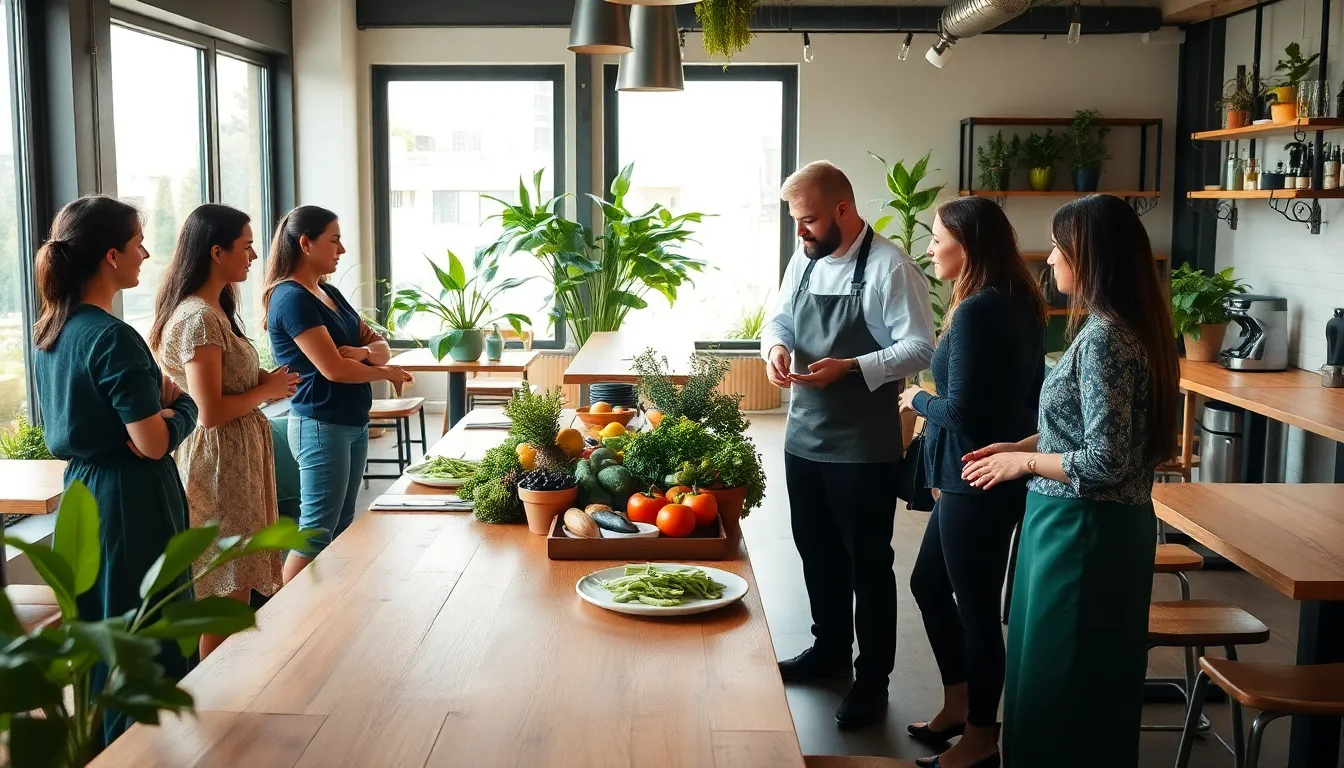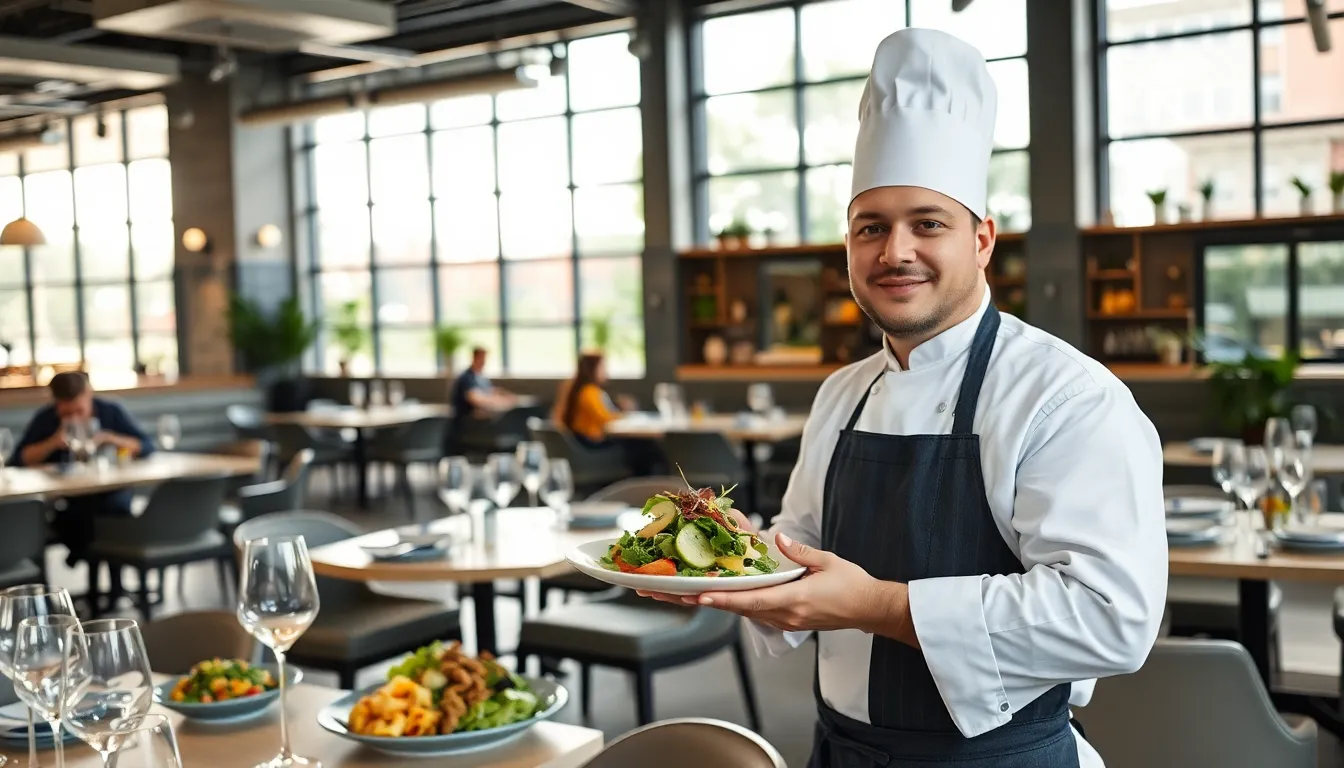The food and beverage industry is abuzz with innovation, creativity, and some downright surprising trends that are defining how we eat and drink. Imagine walking into a restaurant and being handed a menu that not only caters to your cravings but also aligns with your ethical values. That’s the reality today. With increasing consumer awareness and changing preferences, the landscape is shifting faster than you can say “avocado toast.” Let’s jump into the latest trends that are making waves in this ever-evolving industry.
Table of Contents
ToggleSustainability Practices

Sustainability has become a buzzword, but it’s more than just a trend: it’s a necessity. Restaurants are adopting eco-friendly practices to minimize waste. Think composting scraps, reducing plastic use, and sourcing ingredients locally.
Farm-to-table concepts are gaining traction, allowing consumers to know where their food comes from. Not only does this promote local economies, but it also tastes better. Companies like Blue Apron have implemented zero-waste initiatives, inspiring others to follow suit.
Plus, consumers love supporting brands that prioritize sustainability. Studies show that 71% of diners are more likely to choose restaurants with sustainable practices. Coupled with the challenge of adhering to environmental regulations, the food industry is evolving into a green powerhouse.
Plant-Based Alternatives
The rise of plant-based diets is reshaping menus across the globe. Meat alternatives are no longer the exclusive domain of health nuts: they’re enticing meat lovers as well. With products like Beyond Meat and Impossible Foods capturing attention, these brands have given “vegan” a much-needed makeover.
Consumers are increasingly curious about ingredients and dietary choices, so offering plant-based options is essential for any establishment. The trend is not purely about health: it reflects a growing concern for animal welfare and sustainability as mentioned earlier.
Restaurants feature exciting nearly identical meat substitutes in burgers, tacos, and even crab cakes, attracting diverse clientele eager to try something new without sacrificing flavor.
Health and Wellness Focus
Health and wellness are not just fads: they’re mainstream. Consumers are more health-conscious than ever, choosing whole foods and nutrient-dense options. This shift is reflected in menus that feature ingredients like quinoa, chia seeds, and avocados.
A recent survey revealed that 60% of consumers are on the lookout for healthier options when dining out. Alongside this, functional foods that offer added health benefits are making their mark. These are foods fortified with vitamins or probiotics, designed to enhance wellbeing.
As a result, restaurants and cafes are introducing wellness shots, superfood smoothies, and gluten-free options, all while ensuring they don’t compromise on taste.
Technology Integration
Technology is transforming the food and beverage industry in remarkable ways. Imagine ordering your meal through an app, skipping the line entirely, and receiving personalized recommendations based on past orders. That’s the future happening now.
Augmented reality menus and AI-driven customer experiences are changing how food is presented and enjoyed. Tableside tablets allow diners to explore and order ingredients in real-time. Also, data analysis helps businesses understand consumer behavior, optimizing menu offerings to better suit trends.
Even voice-activated systems are being integrated into restaurants, allowing guests to place orders seamlessly. With these technological advancements, customer experiences are more interactive and engaging.
Global Cuisine Influences
Global cuisine has never been more accessible. The rise of globalization means that exotic dishes are just a restaurant away. Diners increasingly crave authentic flavors from different regions, from spicy Thai curries to rich Moroccan tagines.
Food trucks and pop-up restaurants are hotspots for unique dishes, moving beyond traditional cuisine. It’s not uncommon to see fusion dishes that marry culinary traditions, such as Korean tacos or sushi burritos.
Food lovers are adventurous, willing to explore and experiment with bold flavors and ingredients. This trend isn’t merely about taste: it’s about a cultural experience, broadening horizons in a world that’s becoming smaller.
Personalized Dining Experiences
Gone are the days of one-size-fits-all dining. Today’s consumers seek personalized experiences. Whether it’s custom meal options or unique dining settings, the demand for individuality is palpable. Restaurants are beginning to create tailored experiences that speak directly to customers’ desires.
Picture this: dining choices based on dietary needs, preferences, and even mood. Innovative chefs are reinventing their roles by offering tasting menus that reflect a diner’s tastes, creating a unique engagement.
Also, using technology to collect customer feedback and preferences allows chefs to refine and enhance their offerings continually, ensuring an unforgettable visit.



